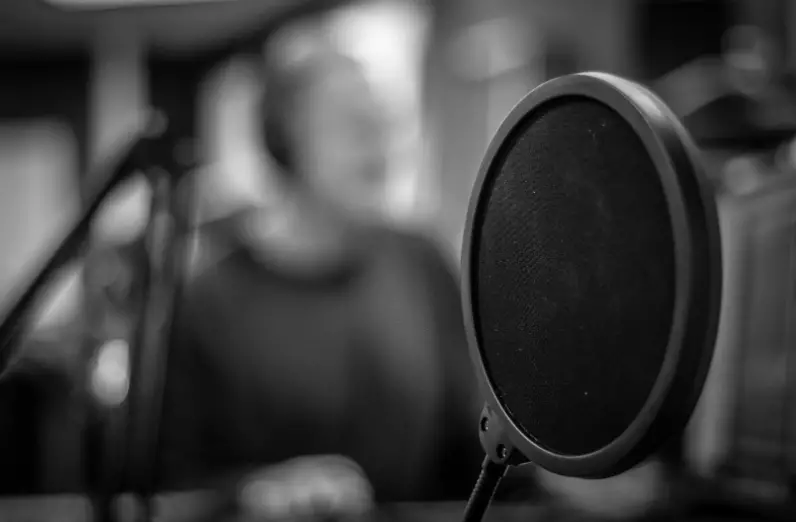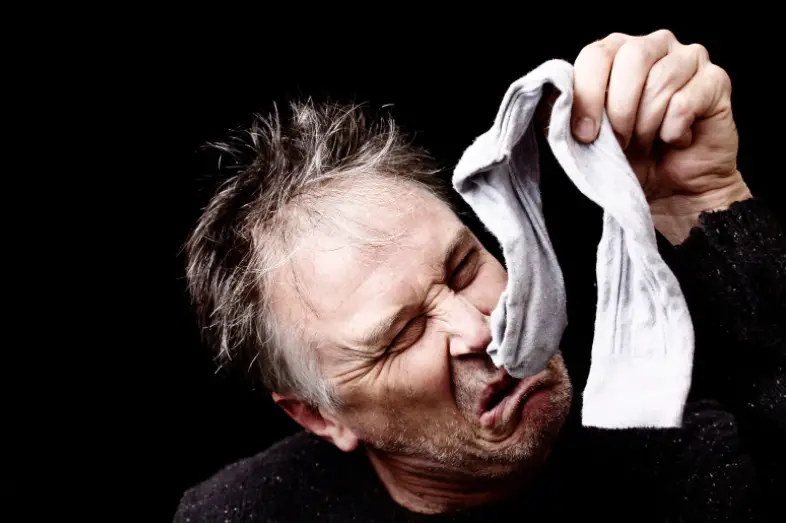A pop filter is an essential thing for anyone who does voiceover work, sings, raps or records audio. It prevents popping in your microphone when you say certain consonant sounds like ‘p’ or ‘t’. The majority of the time, it’s what people are referring to when they say “get yourself a pop screen”. Many microphones come with one built right into the mic – which makes life easy! If you’re not sure what I’m talking about here, let me break it down.
The name itself gives away what it does: pops and filters. To put it simply, what a pop filter does is it allow air to flow freely through the filter so you can speak normally into your microphone but what it catches are those pesky “PPP-puh” sounds. It’s also called a pop shield because of what its purpose is.
How does a stationary mic benefit from having a pop filter? I’m going to tell you straight – no matter how expensive or what type of microphone you have if there’s no pop filter on it you’re going to be hearing quite a bit of popping. Most mics come with an attachment for this very reason, but what if you’re on a budget and don’t want to buy an extra accessory?
One of the most common dilemmas recording artists run into with their setup is having to choose between either buying a pop filter or buying another attachment for their microphone. I’ve found that there are still ways around this. For example, what you can do is buy yourself what’s called an ‘arm‘ or what’s also referred to as a mic boom. The idea behind this is that it suspends your microphone in front of the mouth while keeping it far enough away so no popping occurs – genius!
If you go this route, however, make sure when purchasing the arm (or boom) that you get that’s made specifically for voice recording. The arms I’ve seen for musical instruments such as a guitar or even a violin won’t work because they’re not strong enough to carry what’s necessary for a voice recording environment.
The bottom line is that in order to prevent pops from being heard in your final track, what you need is what’s called a pop filter – it doesn’t have to be anything fancy either! It costs around $10-$20 and works wonders. You can check out the latest prices on Amazon HERE!
In fact, many of the popular microphones today come with them built-in right into the mic. Keep in mind though when purchasing this for yourself what kinds of sounds your mic picks up well without too much interference, so you buy what’ll benefit your recording situation the most.
There are also ways around what I’ve said here if you’re not keen on what’s needed to reduce the volume of your “P” and “T” sounds. You can always turn down what you say in post-production or what you can do is buy yourself a compressor that greatly minimizes pops, but this all depends on what type of voice recording software you use (if any) – like Audacity for example.

Table of Contents
Is a pop filter necessary?
The answer is an obvious yes, but what you’re going to have to do is weigh what’s more important for what your voice recording needs are. If you’re ok with what the budget option will be then that’s fine, if not then consider purchasing a pop filter or something that’ll at least reduce what pops come up in your microphone.
Either way, what you need to remember is that what the purpose of what a pop filter does. It’s attachable or suspension-based and what it does is reduce pops while allowing for free speech into the microphone. So what are you waiting for? Get your hands on one, they’re not expensive!
Does a pop filter make your voice sound better?
The short answer is YEEESSSS!!!
Can I use a sock as a pop filter?
There are a few options you can go with if you’re looking to use a sock as your pop filter. You can either buy an actual pop filter online for around $30 – $40 or you can make one yourself out of simple household items like socks!
Now to answer the question: Can I use a sock as a pop filter? Hell to the yes, but it’s going to be much louder and more prone to interference in comparison. Some may consider it dishonest towards the listener, others may not care at all, so it’s ultimately up to you in the end. If this is something that doesn’t bother you and what you record has good audio quality without pops (most modern mics do) then go ahead and try using socks!
If not, then it’s probably best to invest in an actual pop filter. Just remember that what you use is completely optional so if you want to save yourself the money and use something else, there are always other options out there – Can I use a sock as a pop filter? Sure why not! It’ll work just fine seeing as how socks are already very stretchy, thin, and lightweight.
Who really needs one? Is it necessary? Can I do without it?
The answer is no! You can record just fine without having anything attached or suspended onto your microphone. However, what you do need is something that will reduce the volume of those pesky “P” and “T” sounds while allowing for free speech or hitting that high note, or just dropping those bars.
So at the end of the day Can I use a sock as a pop filter? Absolutely! Can you do without one in general? Yes, but it’s going to be much harder for you to achieve that clean recording sound.



